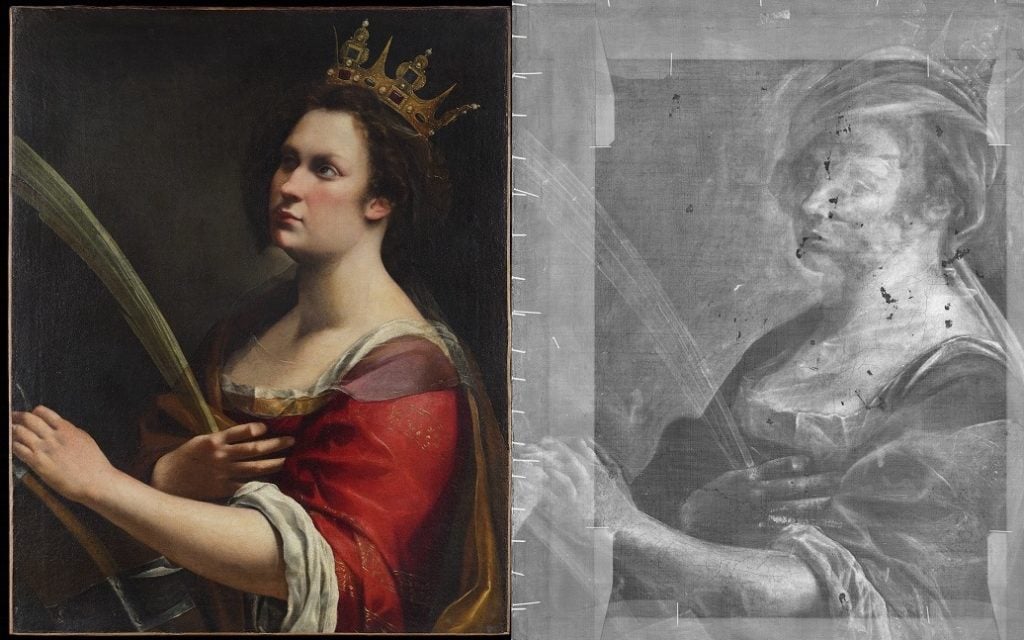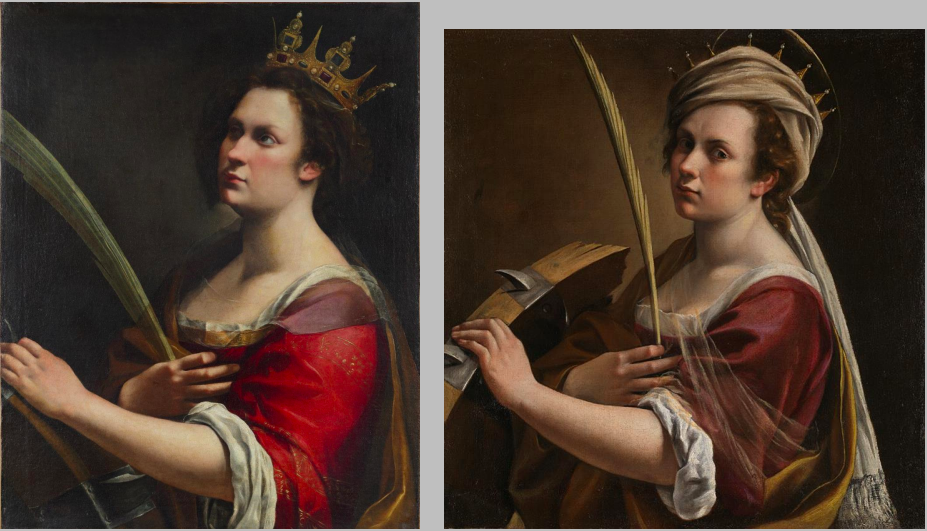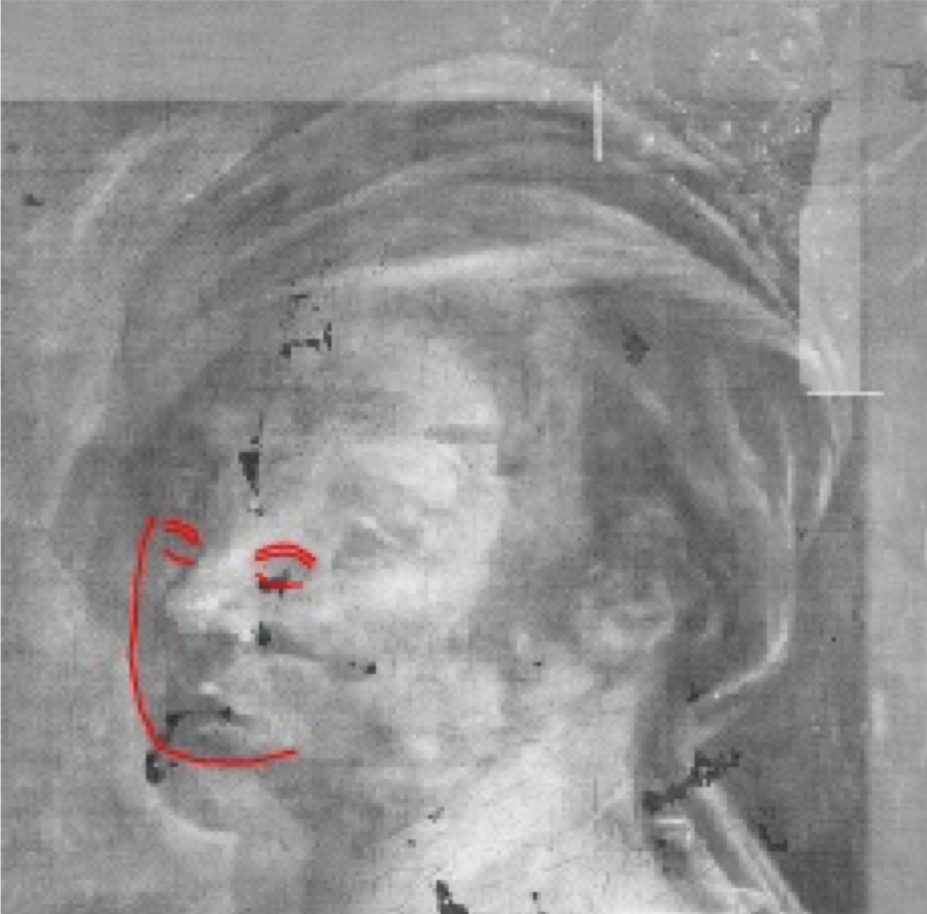Art World
Newly Discovered Drawings Beneath a Work by Artemisia Gentileschi Suggest She Often Used Herself as a Model
Hidden images indicate that the proto-feminist painter’s portrait of Saint Catherine was actually a a depiction of herself.

Hidden images indicate that the proto-feminist painter’s portrait of Saint Catherine was actually a a depiction of herself.

Naomi Rea

Conservators and scientists in Florence have uncovered previously unknown drawings below the surface of a work by Baroque master Artemisia Gentileschi, revealing that the celebrated painter may have often painted herself into her depictions of martyrs.
Over the course of a month-long investigation of her Saint Catherine of Alexandria (1618–20), which belongs to the Uffizi Gallery in Florence, researchers from the Opificio delle Pietre Dure workshop carried out infrared, ultraviolet, and x-ray studies strongly indicating that the artist used the same base drawings for more than one painting. After superimposing the hidden images onto other examples of her work, researchers found that one underlying drawing was “virtually identical” to Gentileschi’s Self Portrait as Saint Catherine of Alexandria (1615–17), which the National Gallery in London acquired for $4.7 million last summer. Experts say this new evidence bolsters hypotheses that the artist often based her female figures on her own image.

Left: the Uffizi’s Saint Catherine of Alexandria (1618–20). Right: the National Gallery’s Self Portrait as Saint Catherine of Alexandria (1615–17).
There is also evidence of Gentileschi’s decision to change compositions. In an underlying image, Saint Catherine is depicted with a turban instead of a crown, with her face turned towards the viewer, rather than looking to the heavens, as in the final composition. The saint’s left hand was also shifted, and a veil was added at the neckline of her tunic.
Uffizi Gallery director Eike Schmidt unveiled the findings ahead of International Women’s Day (March 8).
“The Opificio experts’ skills have allowed us to uncover the secrets behind our splendid St. Catherine,” Schmidt said. “Now, thanks to the outstanding job they have done, we are thrilled to be able to say that in addition to the five masterpieces by Artemisia that the Uffizi already owns, we now have an additional masterpiece which has lain hidden beneath the visible depiction of St. Catherine for all these centuries.”
The investigation was carried out by conservators Maria Luisa Reginella and Roberto Bellucci under the supervision of Cecilia Frosinini.
Speaking to artnet News, Frosinini explained that the findings indicate that Gentileschi used the same preparatory drawings “more than once in her career.” The study also found evidence that she may have reused old canvases.

The preliminary small face traced beneath Gentileschi’s Saint Catherine of Alexandria.
Additionally, researchers uncovered a mysterious third face that could have been an early sketch for an entirely different work. This ghostly image, which has nothing to do with the finished painting, is likely evidence of a discarded idea, indicating that the artist reused her canvases to save on expensive materials.
Once it returns to the Uffizi, Gentileschi’s painting will be permanently displayed in the Medusa Room, in dialogue with the gallery’s famous depiction of the gorgon by Caravaggio.
Gentileschi—whose success was a rarity in the male-dominated art world of the 17th century—was deeply influenced by Caravaggio, as was her father, Orazio Gentileschi. In recent years, she has come to be seen as a proto-feminist, in part for her decision to frequently depict heroic female subjects. She also faced down adversity in her lifetime, and was subjected to a humiliating trial after being raped by an associate of her father when she was 18 years old.
Ths new information about the great female painter is not the Uffizi’s only tribute to the accomplishments of female artists. Today, the gallery opened an exhibition showcasing the talent of Italian women from the late 19th and early 20th centuries.
The show, titled “Female Perspectives: Women of Talent and Commitment 1861–1926,” runs through May 26 and highlights Florence’s unique position as a meeting place for leading female figures.